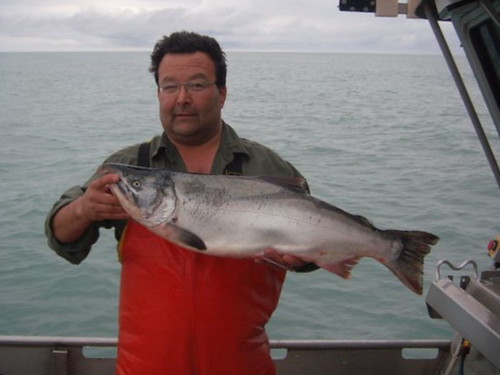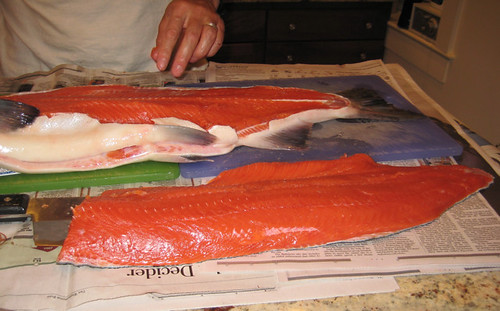Alaskan Salmon and the Birth of a SeaSA
This summer, I had the opportunity to travel to Alaska to check out the Copper River salmon fishery and I'm happy to say I came back with more than a story.
There, I met a fisherman Bill Webber, pictured above, who sells direct to customers. The proposition made sense when I saw fisherman got only $1.85 per pound for Copper River sockeye salmon. This was the same stuff -- or actually a better grade of fish -- than I was buying at Whole Foods for at least $15 a pound this summer. The middlemen can move a lot of fish, but it also creates opportunity for fishermen who want to sell direct to people like me who want a really fresh fish.
I also learned that Alaska has extremely stiff fishing regulations that extend to boat ownership. They require commercial fishermen to be on their boats, preventing one fisherman from owning a fleet of boats in the same fishery. The hundreds of boats in Cordova, Alaska, where I was visiting, were all small businesses protected from industry concentration. (When I mentioned that to a farmer, she said that would do wonders for agriculture).
These fishermen also depend on distant markets, because a few boats could probably feed the entire town for a year -- easily. In fact, without distant markets, there wouldn't be a town since there's hardly anything else going on aside from fishing. Okay, maybe moose hunting.
So I decided to buy fish direct from Alaska, to support the fishermen and the remarkably sustainable fishery up there.
I told my friends here in DC and we decided to buy seven fish -- 64 pounds total. Last Monday, on Labor Day, Bill went out gillnetting for Coho salmon, which run around 9 pounds each. On Tuesday, he put the chilled fish on an Alaska Airlines jet. On Wednesday, I picked the box up at DC's airport -- just in time to get snarled in traffic because Obama was giving his health-care speech on Capitol Hill, around the corner from my house. Forgot the streets would be on lockdown.
Anyway, I finally made it home, then spent the next two hours filleting the fish listening to Obama on the radio (and cheering him on).
The fish were a big hit. As one friend said in an email, "We love our Salmon! It is not only tastier but the texture is very much better than the supermarket or fish market equivalent." We also had a lot of carcasses, which some people passed on. Too bad. There was a lot of meat on them, which one friend made into a fume (stock) and then risotto. Another friend salted the carcass and kept it in the frig.
I think I'm going to pick the meat off the bones and make salmon burgers, then make fume with the bones, leeks, and fennel. I'm using the tail portion of the fish for gravlax. We've already had grilled salmon and salmon aoili sandwiches on ciabatta rolls.
Now, I know, some will say, you're flying fish from Alaska? But if you're going to eat fish, I think the most important thing is the sustainability of the fishery -- and on that score, Alaska is a leader. Plus, this was a first step. I will be looking at nearby sources, too, in the future. But for me, the health of the fishery is more important than the locale when it comes to fish.
With shipping, we ended paying less than retail (though I did cramp my shoulder from all the filleting). Still, it was worth it.
If you missed it, check out the short video I shot on Bill's boat.
- Samuel Fromartz

